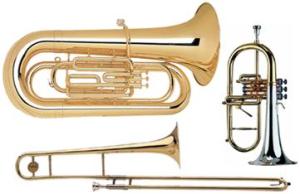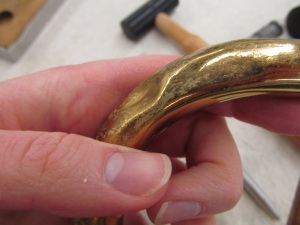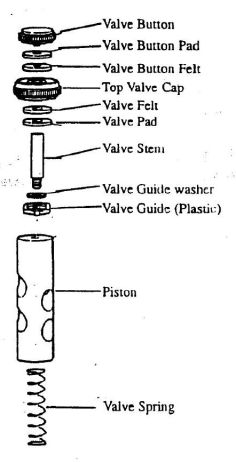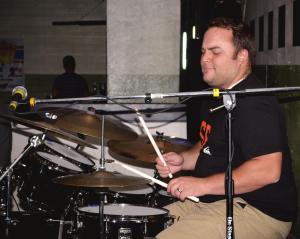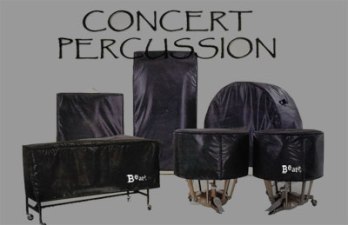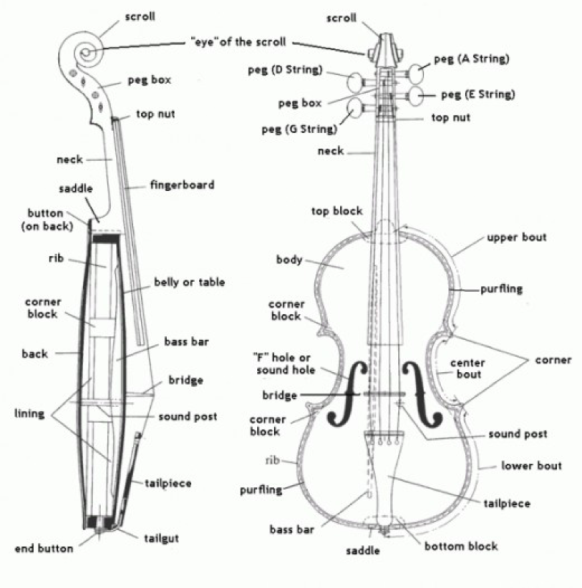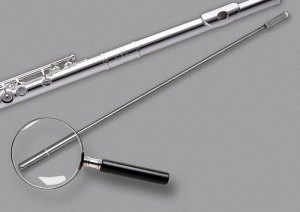Music classrooms are unique from other classrooms in that they don’t have the standard desks, chairs, and annual textbooks. Instead they have music stands, risers, posture chairs, sheet music, and various other pieces of equipment that are necessary to provide classroom music education. This post is intended to provide general information in regards to some of the more common pieces of equipment found in most music classrooms. Please refer to owners manuals and your particular classroom for more specific care needs. 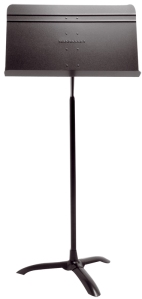
Music Stands: My general rule to maintain music stands is to insist that students do nothing to a music stand that they wouldn’t want done to their face. This includes (but is not limited to) writing on them, spinning them, laying them flat to use as a desk, sword fighting, or using them as dominoes (yes, I have seen all of these). I highly recommend storage on a stand rack when not in use so students are not tempted to play with them, and a yearly cleaning and blot check. Cleaning can be done with a general use cleaner, soft cloth, and water, or some kind of cleaning wipe that is not abrasive, on of the best times to do this is at the end of the school year– have students help clean the stands then put them away for the summer. Also be sure to check the bolt on the bottom of the stand at least once a year and use a proper wrench or socket tool to tighten loose bolts. These are also the recommendations from the Wenger Company’s music stand owner’s manual.
 Posture Chairs: Taking good care of posture chairs is similar to that of the music stands. Chairs should not be used for anything but sitting, and to maintain the caps on the bottom of the feet chairs should not be dragged across the floor. Chairs should be stacked when not in use, because of the unique construction of posture chairs, however, they can only be stacked about five high, when stacking on the floor. To conserve space chair racks can hold more in the same space of two stacks of five. Chairs should also be cleaned yearly with a mild cleaner and soft cloth, also check for gum tucked under the seats.
Posture Chairs: Taking good care of posture chairs is similar to that of the music stands. Chairs should not be used for anything but sitting, and to maintain the caps on the bottom of the feet chairs should not be dragged across the floor. Chairs should be stacked when not in use, because of the unique construction of posture chairs, however, they can only be stacked about five high, when stacking on the floor. To conserve space chair racks can hold more in the same space of two stacks of five. Chairs should also be cleaned yearly with a mild cleaner and soft cloth, also check for gum tucked under the seats.
Risers: Follow all instructions for storage, assembly and take down in the owners manual. Students should not be allowed to jump or otherwise rough-house on risers, as much for their own safety as to keep the risers in working order.
Tuners, metronomes, keyboards, etc.: Label all school equipment in permanent ink and/or with a barcode, this will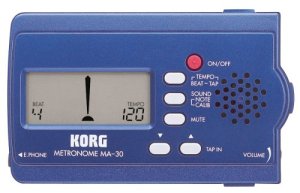 help prevent theft. Check all batteries and cords regularly and replace as necessary. Roll cords in a manner so that they will not twist, this will extend the life of cords and cables. Clean items as appropriate with damp cloth, never immerse.
help prevent theft. Check all batteries and cords regularly and replace as necessary. Roll cords in a manner so that they will not twist, this will extend the life of cords and cables. Clean items as appropriate with damp cloth, never immerse.
School mouthpieces and mutes: Label all school items with permanent ink and.or a barcode to prevent theft. Clean regularly with appropriate cleaners.
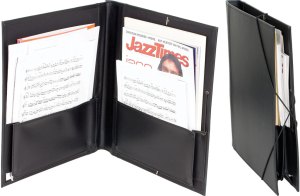 Sheet music: Instead of a textbook that is handed out at the beginning of a term and collected at the end, music teachers hand out sheet music many times every year. Music is hard to keep track of and can be even more difficult to organize. One of the best organization systems I have seen was student managed at a high school. The music was organized alphabetically by ensemble and each part was numbered. Numbering each piece made it very easy to put music away and made it very obvious when a part was missing. The best part of this system was that each student was held responsible for their part. This was done by taking down the number of each part each student had. This may seem tedious and time consuming, but when it is student managed, supervised by a parent or the teacher, it really is efficient. By making note of what number part each student has they can be held responsible for lost and/or excessive damage to sheet music, just as they are held responsible for text books in other classrooms. Finally a computer file is kept of all the pieces so as to record when they have been removed from the library and when they have been returned with additional notes about the piece such as type of ensemble, composer/arranger, performances, missing parts, and conductor’s notes. Students should be strongly advised to only write on music in pencil and required to erase all marks before turning in any music. Also, teachers should provide folder for students to store music in, whether these be leather folders, binders, or cardboard folders the music stores hand out doesn’t matter, so much as there is something there to protect this valuable investment. In the case of copies– students should still be held responsible for caring for copies– if damage and carelessness is allowed because it’s “just a copy” students will become careless about music that isn’t copied.
Sheet music: Instead of a textbook that is handed out at the beginning of a term and collected at the end, music teachers hand out sheet music many times every year. Music is hard to keep track of and can be even more difficult to organize. One of the best organization systems I have seen was student managed at a high school. The music was organized alphabetically by ensemble and each part was numbered. Numbering each piece made it very easy to put music away and made it very obvious when a part was missing. The best part of this system was that each student was held responsible for their part. This was done by taking down the number of each part each student had. This may seem tedious and time consuming, but when it is student managed, supervised by a parent or the teacher, it really is efficient. By making note of what number part each student has they can be held responsible for lost and/or excessive damage to sheet music, just as they are held responsible for text books in other classrooms. Finally a computer file is kept of all the pieces so as to record when they have been removed from the library and when they have been returned with additional notes about the piece such as type of ensemble, composer/arranger, performances, missing parts, and conductor’s notes. Students should be strongly advised to only write on music in pencil and required to erase all marks before turning in any music. Also, teachers should provide folder for students to store music in, whether these be leather folders, binders, or cardboard folders the music stores hand out doesn’t matter, so much as there is something there to protect this valuable investment. In the case of copies– students should still be held responsible for caring for copies– if damage and carelessness is allowed because it’s “just a copy” students will become careless about music that isn’t copied.
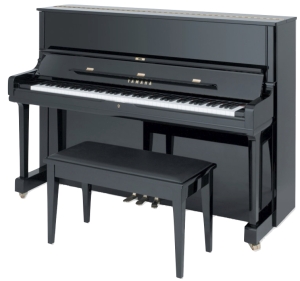 Pianos and other classroom instruments: No matter the value of classroom instruments students should be taught to respect them. Students should not be allowed to abuse any classroom instruments from cheap kazoos and egg shakers up to the grand piano or tympani. Students should be taught to use cases and covers where applicable, to not store backpacks, books, etc. on top of them, and to only use them for their proper functions. It is up to individual teachers to set rules in regards to classroom instruments especially large instruments such as pianos. Music classroom equipment should be respected and taken care of as well as, if not better than, equipment found in standard classrooms, as it often represents a more significant expense on the part of the school. Students should be taught to respect and care for music classroom equipment, and what better way than to allow them to opportunity to help. When classroom equipment is given proper care and maintenance it will last a long time and be worth the expense. When students are taught proper care of this special equipment and allowed to help maintain it they realize the value and take more responsibility for its “proper care and feeding .”
Pianos and other classroom instruments: No matter the value of classroom instruments students should be taught to respect them. Students should not be allowed to abuse any classroom instruments from cheap kazoos and egg shakers up to the grand piano or tympani. Students should be taught to use cases and covers where applicable, to not store backpacks, books, etc. on top of them, and to only use them for their proper functions. It is up to individual teachers to set rules in regards to classroom instruments especially large instruments such as pianos. Music classroom equipment should be respected and taken care of as well as, if not better than, equipment found in standard classrooms, as it often represents a more significant expense on the part of the school. Students should be taught to respect and care for music classroom equipment, and what better way than to allow them to opportunity to help. When classroom equipment is given proper care and maintenance it will last a long time and be worth the expense. When students are taught proper care of this special equipment and allowed to help maintain it they realize the value and take more responsibility for its “proper care and feeding .”
When given the opportunity to help maintain classroom equipment students are more likely to respect it. Rules should be set an enforced when it comes to the treatment of specialized music classroom equipment. This will ensure that the investment is worth the expense.
What other specialized equipment do you have in your music classroom and how do you take care of it?

